Hyundai Ioniq 6 N: The (Relatively) Affordable Electric Sports Sedan
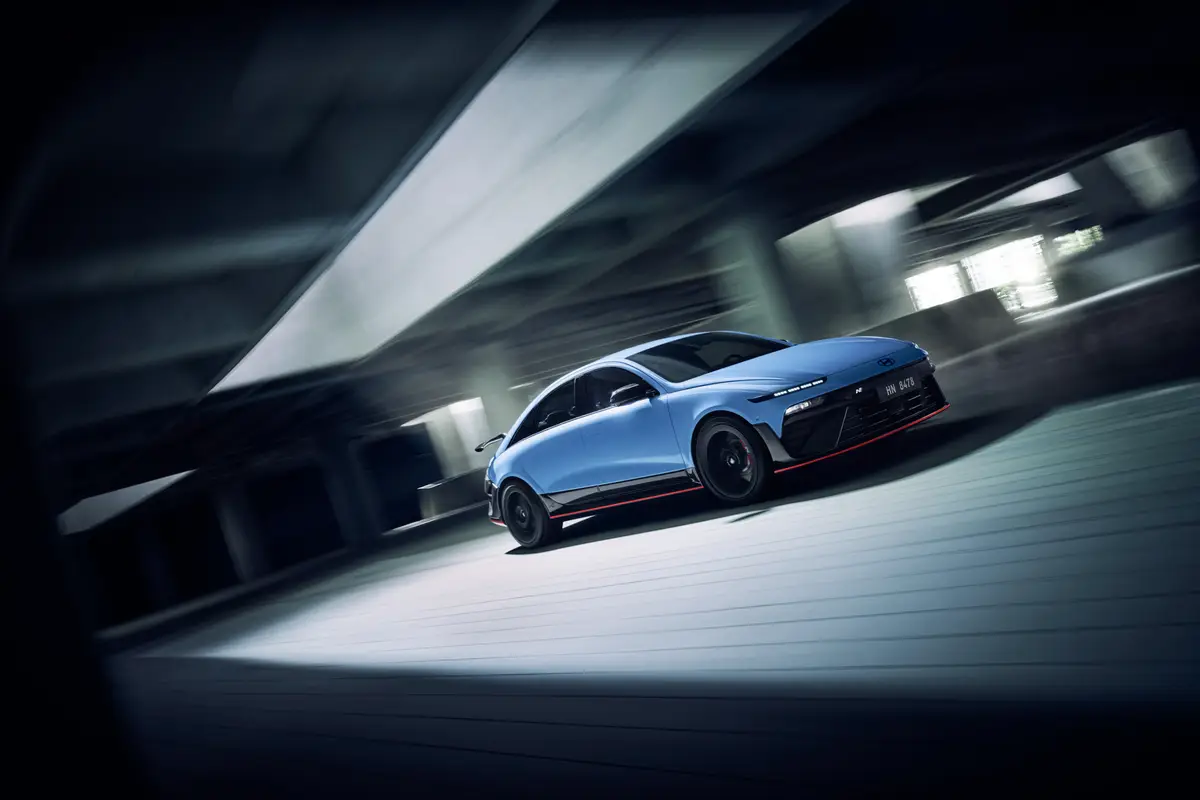
- Competes with: BMW i4, Tesla Model 3
- Looks like: An Ioniq 6 ready for the track
- Powertrain: 641-horsepower dual electric motors; 84-kilowatt-hour battery; all-wheel drive
- Hits dealerships: 2026
Hyundai didn’t make us wait long for this one. After teasing the Ioniq 6 N in June in a few shadowy photographs, the brand revealed its new electric performance sedan at the Goodwood Festival of Speed in England. It is awesome, jaw-dropping and also not at all surprising.
Related: Settling In: 2025 Hyundai Ioniq 6 Priced From $38,900
Do What Works; Repeat
The critical electrical bits of the Ioniq 6 N are all familiar from Hyundai’s first high-performance EV, the Ioniq 5 N. Like that electric hot hatch, the Ioniq 6 N features dual electric motors, one front and one rear, for all-wheel drive. Combined, they generate a nominal 601 horsepower and 545 pounds-feet of torque, though N Grin Boost amplifies output to 641 hp and 568 pounds-feet for up to 10 seconds at a time. (There’s a 10-second cooldown period before N Grin Boost can be engaged again.) According to Hyundai, the Ioniq 6 N will accelerate from 0-62 mph in 3.2 seconds, and the claimed top speed of 160 mph is 2 mph slower than its quoted figure for the Ioniq 5 N.
As opposed to the pedestrian Ioniq 6, in which the largest battery pack stores 77.4 kilowatt-hours of energy, the 6 N is fitted with the 84-kWh battery that’s available in the regular Ioniq 5 and standard in the 5 N. Hyundai says it improved the pack’s thermal management system and increased the capacity of its cooling system, which shortens preconditioning times for both charging and maximum performance. The Ioniq 6 N offers drivers three preconditioning modes to extract the best performance in different track settings: Drag, Sprint and Endurance.
On a 350-kilowatt DC fast charger, Hyundai says the Ioniq 6 N can replenish its battery from 10% to 80% charge in about 18 minutes. The brand hasn’t given an official range estimate for it yet, but based on their shared powertrain and battery, expect a figure close to the Ioniq 5 N’s 221 miles.
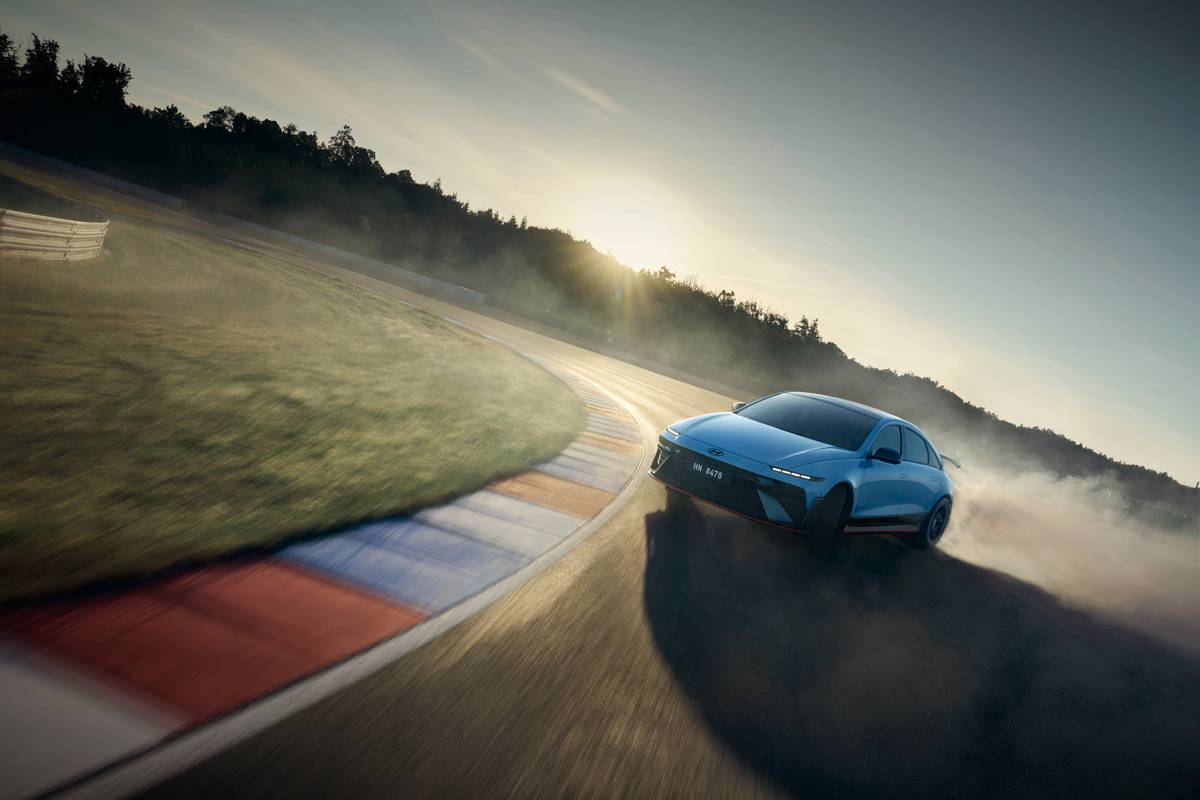
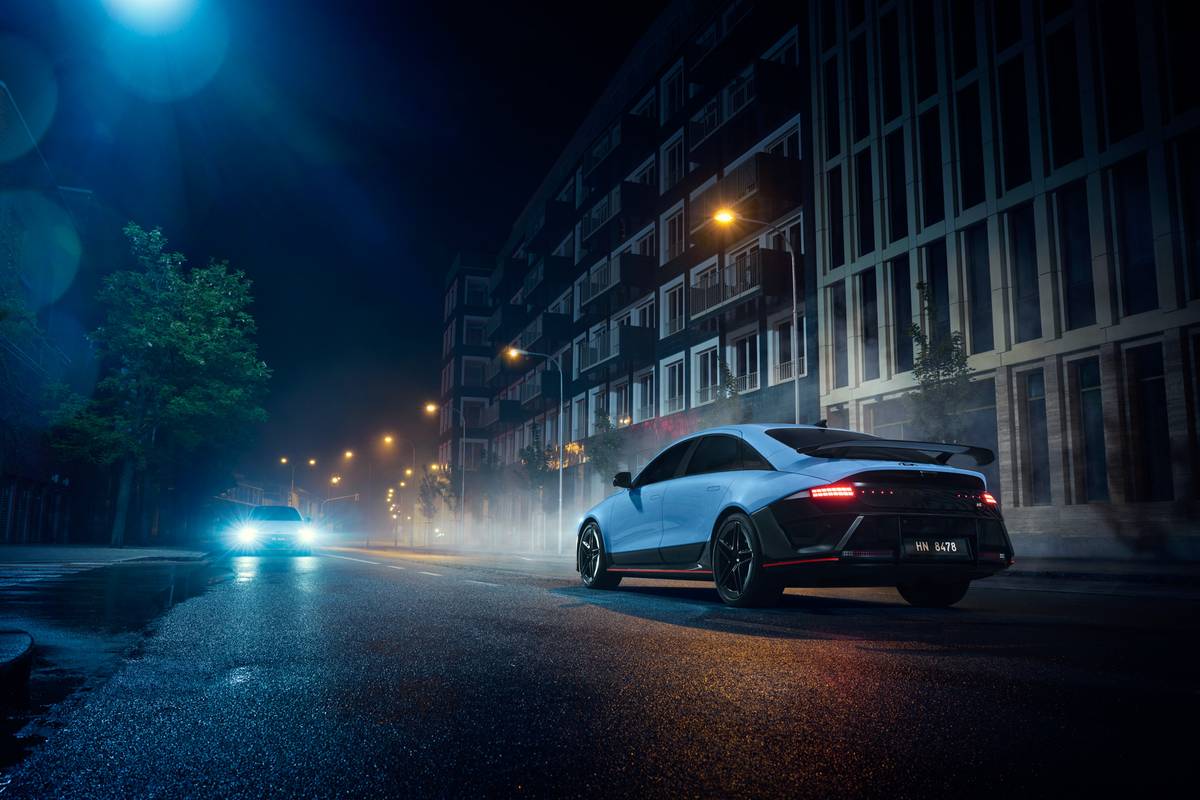
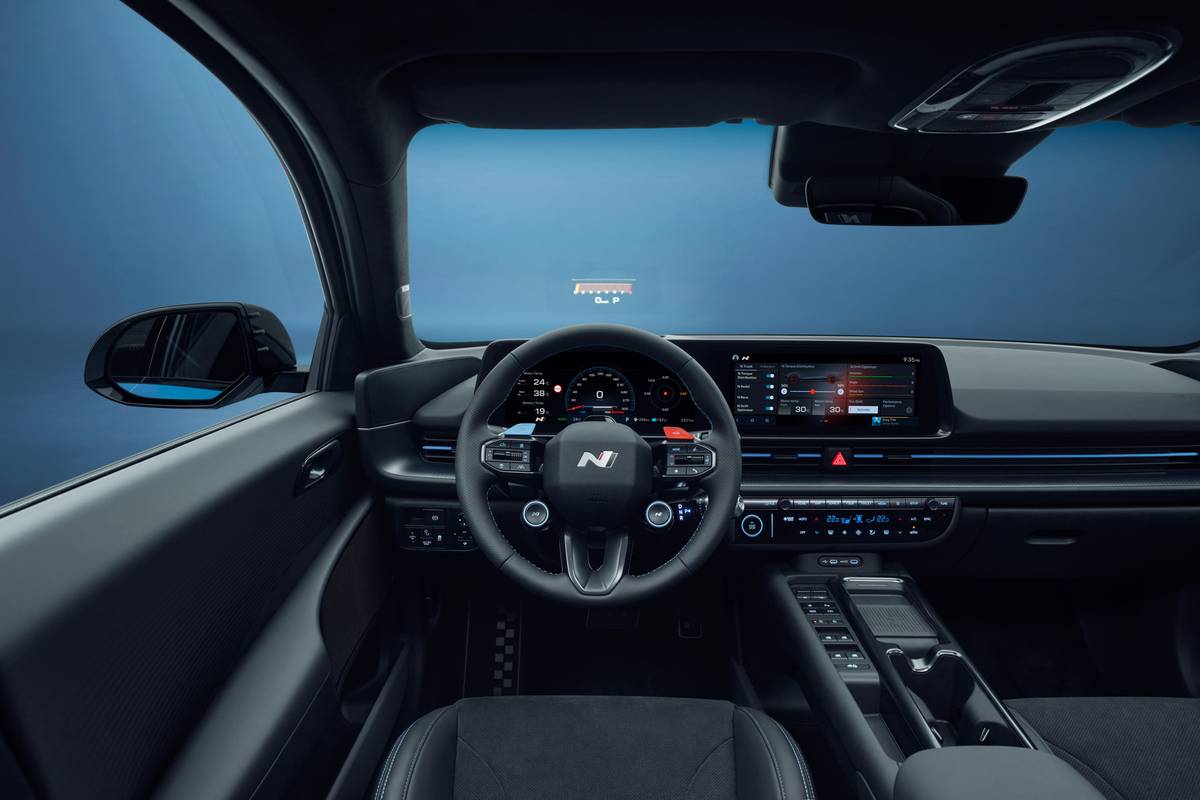
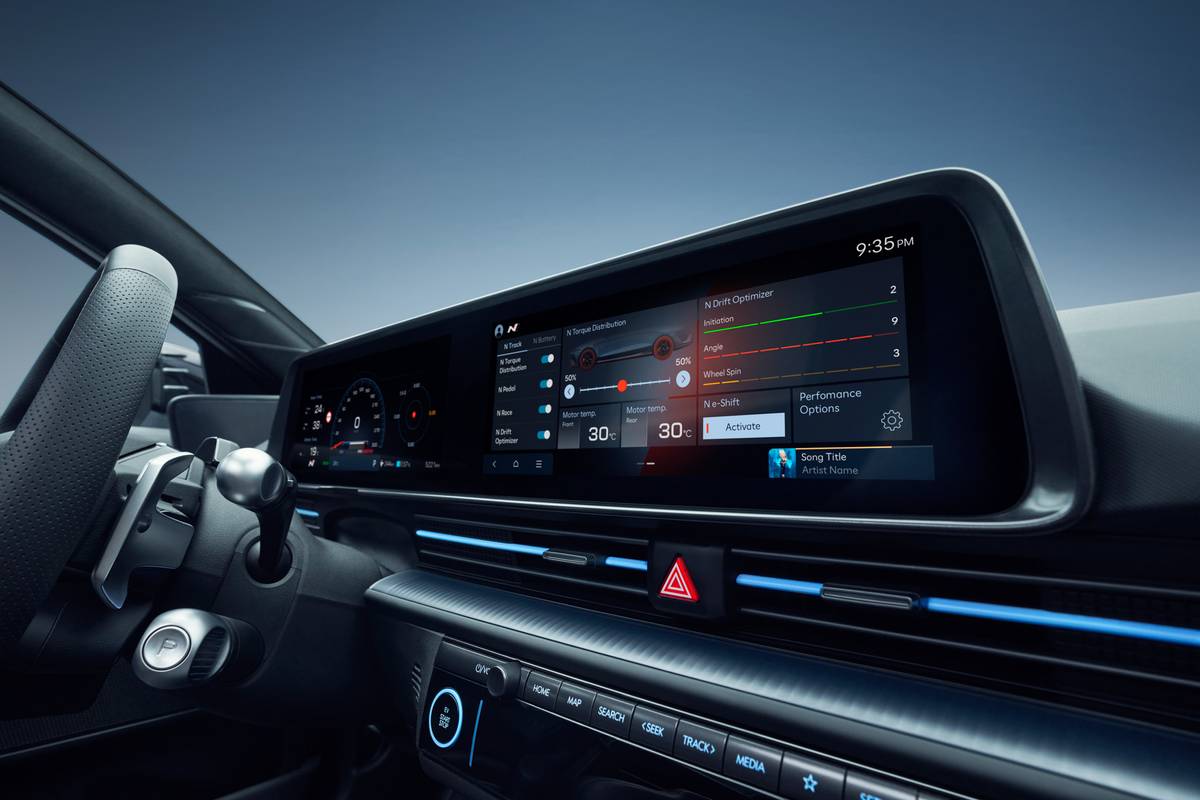
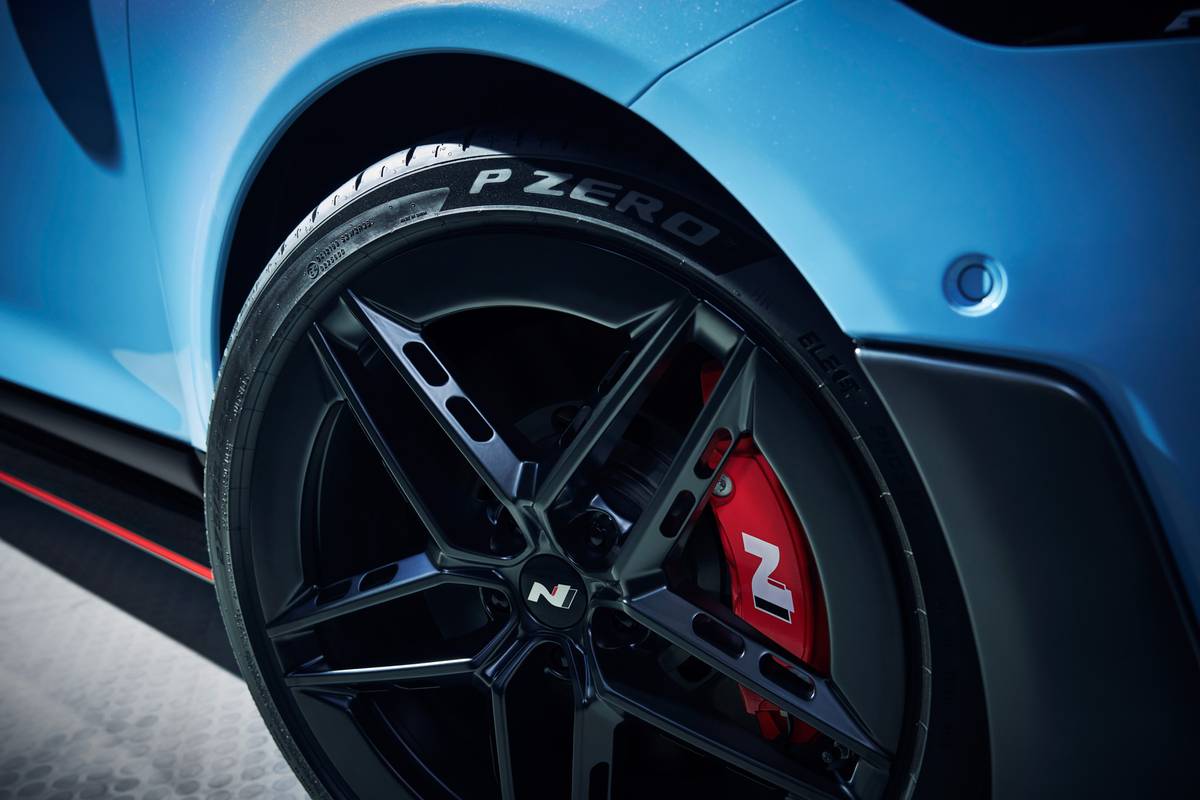
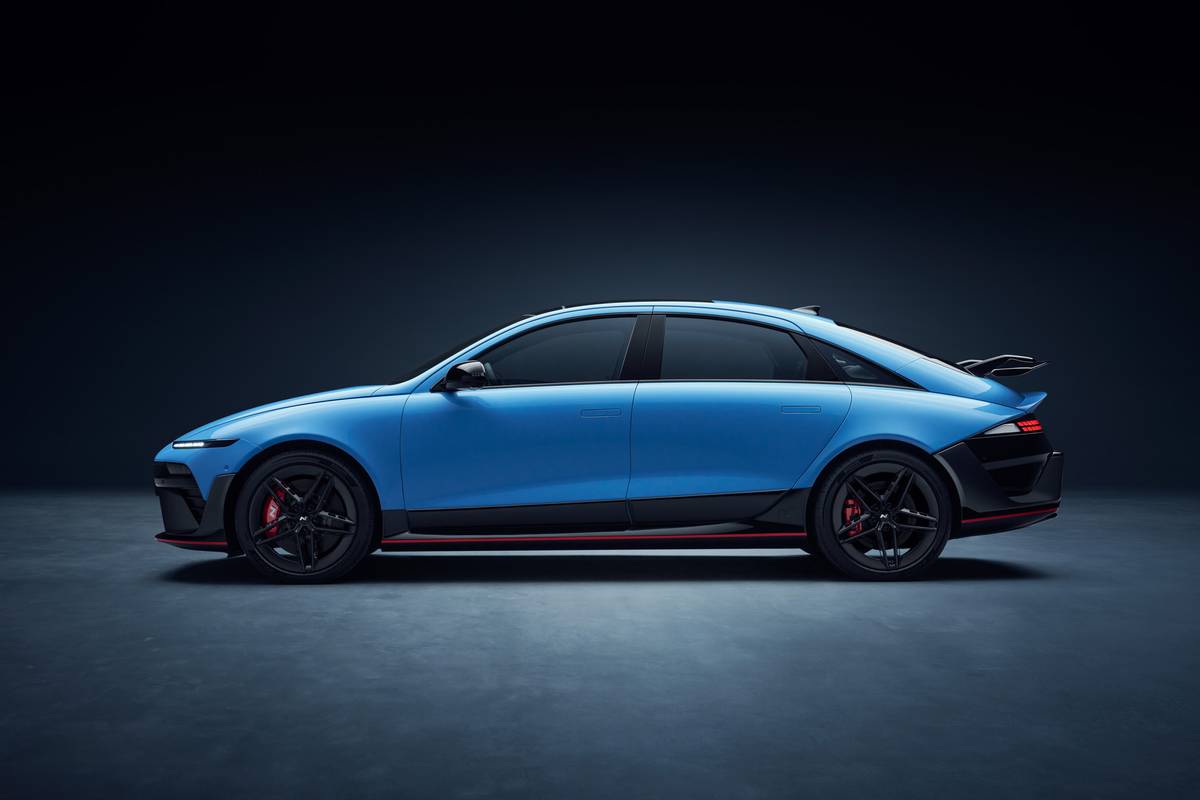
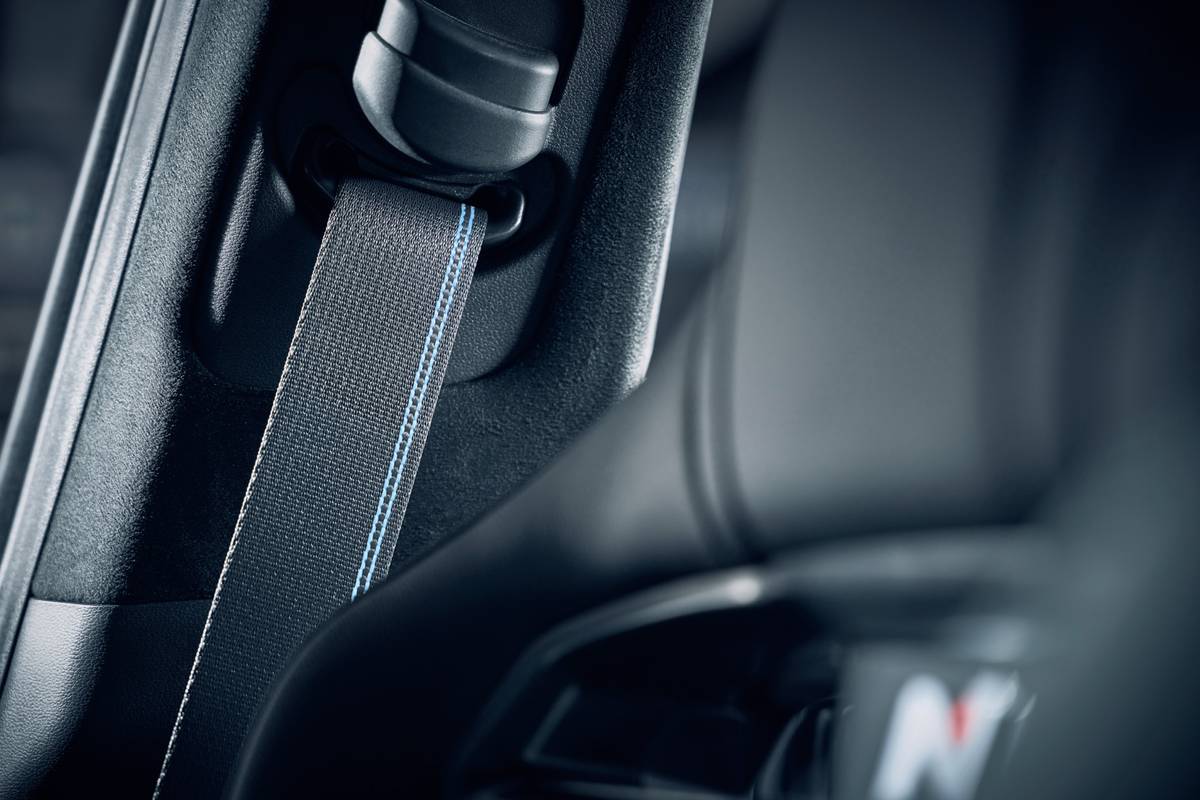







Bigger and Stickier
Its prominent swan-neck spoiler and diffuser help stretch the Ioniq 6 N to 194.3 inches, 3.2 inches longer than the standard Ioniq 6. Though the 6’s curvaceous bodywork masks its flared fenders, the N is 2.4 inches wider than the regular car, and because the suspension was so thoroughly reworked, the N’s wheelbase is 0.6 inch longer than the standard 6’s. The 6 N also rides on new “stroke-sensing” electronically controlled shock absorbers that Hyundai says offer a wider range of damping force adjustments to tailor ride quality and handling to different environments. Hyundai claims it has lowered the roll center, too, but overall height remains unchanged.
That wing is also largely responsible for dirtying up the N aerodynamically, increasing the EV’s drag coefficient to 0.27 from the standard 6’s slippery 0.22. But drivers will no doubt be grateful for the stability generated by that wing as they approach that 160 mph top speed.
Hyundai fits Pirelli P Zero 5 tires specially tuned for the Ioniq 6, sized 275/35R20. Tucked inside the N-exclusive black wheels are the same-size brakes as the 5 N wears: 15.7-inch discs squeezed by four-piston calipers up front and 14.2-inch rotors and single-piston calipers out back.
More From Cars.com:
- 2025 Hyundai Ioniq 5 N Up Close: Optionally Silent Fury, Questionable Comfort
- Electrifying 2025 Hyundai Ioniq N Priced From $67,475
- Hyundai EVs Get Plug-and-Charge, In-App Payments for Major U.S. Charging Networks
- 2023 Hyundai Ioniq 6 Review: All About That Flow, Buddy
- Find Your Next Car
N Gauging
If the sportiness of a Hyundai can be gauged by how many of its performance features are branded with the letter N, the Ioniq 6 N is maxed out. It boasts N Launch Control, N e-Shift, N Active Sound +, N Grin Boost, N Battery, N Drift Optimizer, N Torque Distribution, N Pedal, N Brake Regen and N Track Manager.
Within that litany are some seriously advanced driving aids. The Ioniq 6 N’s rear motor generates about two-thirds of its power, which promises lively handling, but N Pedal uses regenerative braking on select wheels to help the car turn in more sharply. The N Drift Optimizer acts as a sort of built-in driving coach and safety net, enabling drivers to program individual allowances for drift initiation, drift angle and wheelspin. N Track Manager logs dynamic data on-track for later evaluation and analysis.
In the Ioniq 6 N, Hyundai also improved on the features we found endearing in our first test of the 5 N. Following that encounter, one of Cars.com Road Test Editor Brian Normile’s biggest complaints was that, “not all of the nifty N features can work together.” N e-Shift simulates a close-ratio transmission hustling through eight gears, but it had to be disabled to use N Launch Control.
No more. Hyundai’s development team must be regular readers, as the feature can now operate in tandem with launch control, the drift optimizer and the other bits of high-performance theater in the Ioniq 6 N’s repertoire. The brand also says it has refined N e-Shift to minimize performance loss. (In that test, the 5 N needed an extra 0.6 second to hit 60 mph with it engaged.)
N Active Sound +, too, is improved in the Ioniq 6 N. Normile also noted that the synthesized engine noises could “feel pandering” and suggested that Hyundai add some new ones. Done: Instead of the 5 N’s single option, the Ioniq 6 N has three: the “motorsport-inspired” Ignition, a “heritage-infused” Evolution and “the futuristic sci-fi tones of Lightspeed.” Hyundai says it has also improved sound quality through hardware revisions and “extensive acoustic fine-tuning.” And whereas shift lights have long been common in high-performance cars, the N Ambient Shift Light transforms the entire cabin into a shift light — or as Hyundai phrases it, “transforms the cockpit into an arena where every gear change is not just felt but seen.”
Release Date and Pricing
Hyundai has not yet said when the Ioniq 6 N will go on sale, but expect it to begin arriving at dealerships sometime in 2026. Pricing is not settled yet, either, but based on the premium the brand charges for the 5 N, we figure it’ll start around $65,000. (The 2025 Ioniq 5 N stickers at $67,475 with destination charge.) At Goodwood, the car debuted in a new paint Hyundai calls Performance Blue Pearl that adds a new finish to the N performance arm’s signature hue; it, along with a lineup of performance parts, will be available at launch.
Related Video:
Cars.com’s Editorial department is your source for automotive news and reviews. In line with Cars.com’s long-standing ethics policy, editors and reviewers don’t accept gifts or free trips from automakers. The Editorial department is independent of Cars.com’s advertising, sales and sponsored content departments.
Featured stories










